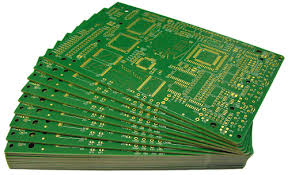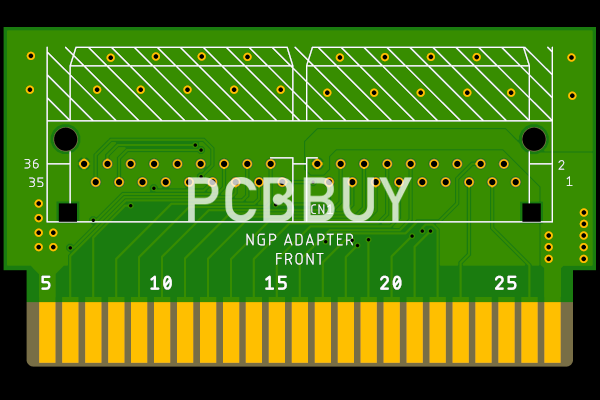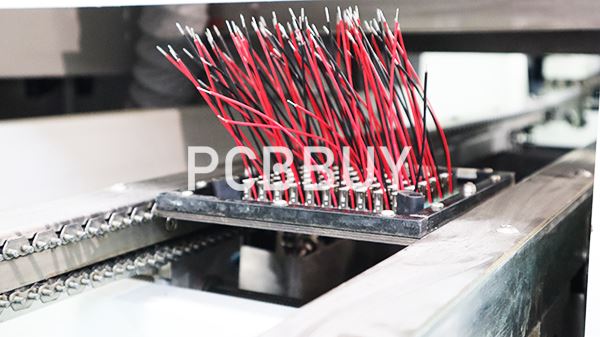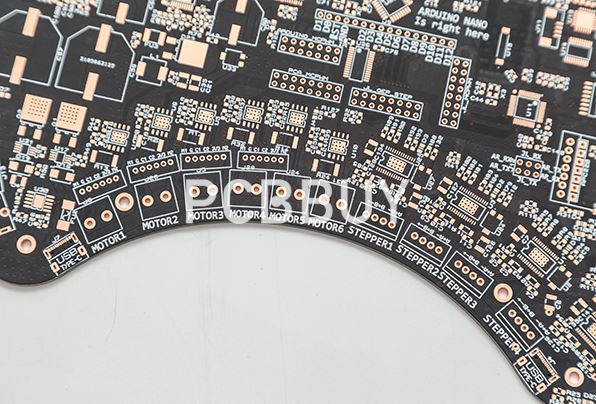How to Choose PCB Thickness in PCB Layout with 7 Attractive Tips?
By:PCBBUY 10/30/2021 10:21

The board thickness is always based on both the insulating material and the top layer material; at the beginning of Circuit boards, this would be Bakelite sheet included as the top layer of the plywood at the end the total thickness of the board would lead to 0.065inches.
Are you curious about the PCB thickness selection? If you are going to learn more about selecting PCB thickness, please check and read the content below for more information.

1. What are the choices of PCB thickness?
The number of layers your PCB determines the overall thickness of your PCB. Some applications require a thicker PCB while some require a thinner type. SO the thickness has very varying standards. The typical range of thickness for the core and prepreg combined is between 0.008 -0.240 inches.
2. How to specify PCB thickness?
You can specify the thickness of your PCB by using a trace width calculator. Simply input all the specifications and the calculator will give you the requirement average thickness. Factors such as the prepreg thickness, solder mask thickness etc. is required. You can calculate up to the hundredth of a millimeter to ensure accuracy in measurements.
3. What is the standard of PCB thickness?
Most PCB manufacturers recommend 1.57mm (0.062 inches) as the standard PCB thickness size. This is the thickness that was used for manufactured bakelite sheets in the early days of PCB fabrication.
However, they still offer standard thickness in; 0.4 mm (0.016 inch), 0.5 mm (0.020 inch), 0.6 mm (0.024 inch), 0.8 mm (0.032 inch), 1.0 mm (0.04 inch), 1.2 mm (0.047 inch), 1.5 mm (0.062 inch), 1.6 mm (0.063 inch), 2.0 mm (0.079 inch), 2.3 mm (0.091 inch), and 3.175 mm (0.125 inch). Ultimately, the right thickness depends on your specific PCB project.
For instance, PCB projects with less demanding requirements call for a standard PCB thickness of 1.66mm (0.063 inches). This thickness will still offer maximum efficiency in terms of overall cost and leads time.

4. Why material affects PCB thickness?
The operation and lifetime of a PCB depend on the choice of materials, but these choices also impact board thickness. Typical board fabrication consists of the substrate, laminate, solder mask and silkscreen. Of these, the laminate and substrate are the most important materials for consideration, as they provide the structure of the board and greatly impact overall thickness. The substrate may consist of paper and epoxy resin, glass weave or ceramic depending on the necessary dielectric constant. Laminates, on the other hand, consist of thermoset resin and either paper or cloth layers. Both laminates and substrates come in many options that determine the thermal, mechanical and electrical properties of a circuit board, but also determine the board’s overall thickness.
5. What is the minimum thickness of PCB thickness?
Simply put minimum thickness PCBs are used to describe circuit boards that are much thinner than standard PCBs. For the majority of PCBs in existence, the minimum thickness is 0.2 mm. Because of the rising market demand for thinner electronics, there has been an increase in demand for thinner printed circuit boards such as 0.5 mm, 0.4 mm, and 0.2 mm boards. These can be used in SIM cards, sensor cards, and other similar components.
It’s worth mentioning that printed circuit boards are a work of several layers including epoxy copper and prepreg, dielectric cores with coating. Several kinds of PCB thicknesses can be attained through a mixture of prepreg sheets and varying core thicknesses. However, the manufacturer needs to use a single layer of the core to achieve a minimum thickness, which restricts the number of copper layers to double units.
To create mechanically functional PCBs, it’s critical that manufacturers distribute layers evenly with an odd quantity of dielectric layers and an even quantity of copper layers. Hence, boards with a larger quantity of layers can cut their overall thickness by leveraging thinner core options.
6. How to process power handling of PCB thickness?
If the designer has ample space on the board to increase the width of the trace, they can continue using the standard copper weight of 35-70 microns (1 to 2 oz). By increasing the width of the copper trace, the designer effectively increases its cross-sectional area, reducing its resistance to the increased current flow.
If the size of the board restricts the designer from increasing the width of the trace to the desired extent, the designer can take recourse to increasing the number of layers or increasing the copper weight.
By increasing the number of layers, the designer can use multiple traces on adjacent layers to share the current flow. Although the designer continues to use the standard copper weight of 35-70 microns (1 to 2 oz), they effectively increase the cross-sectional area by using multiple traces in parallel. However, additional layers contribute to higher overall PCB thickness.

7. What are the considerations of selecting PCB thickness?
When designing your product for the location and fixation of your PCB you must take in to consideration the following:
· PCB Thickness Tolerance (±10%).
· Copper Plating Thickness (approx. 25-50µm).
· Final Finish Plating (HAL, ENIG etc.).
· Soldermask Thickness
· Legend Thickness (approx. 20-25 µm).
Industry Category











